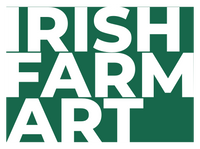Art and agriculture may seem like two very different worlds, but they share a deep and fascinating connection. The landscapes, tools, and daily rhythms of farming have inspired countless artists throughout history. This connection is beautifully expressed in farming-inspired artworks, which capture the essence of rural life and the natural environment. In this post, we will explore how farming has influenced painting, the significance of these artworks, and how they continue to resonate today.
The Influence of Farming on Art: Farming-Inspired Artworks
Farming has been a vital part of human civilization for thousands of years. It shapes not only the land but also the culture and identity of communities. Artists have long been drawn to the scenes of fields, barns, livestock, and farmers at work. These images tell stories of hard work, connection to nature, and the changing seasons.
Farming-inspired artworks often depict:
Vast landscapes with crops and rolling hills
Farm animals such as cows, sheep, and horses
Tools and machinery used in agriculture
Farmhouses and barns as symbols of rural life
Seasonal changes reflecting planting and harvest times
These elements create a rich visual language that celebrates the beauty and challenges of farming life. For example, the golden hues of a wheat field at sunset or the intricate patterns of plowed soil can evoke strong emotions and a sense of place.

The Role of Farming Painting in Preserving Rural Heritage
Farming painting plays a crucial role in preserving the heritage and traditions of rural communities. As modern technology and urbanisation change the face of agriculture, these artworks serve as a reminder of the past and a tribute to the people who work the land.
Artists often spend time in rural areas, observing and sketching scenes that might otherwise be forgotten. Their paintings capture moments of daily life, from sowing seeds to harvesting crops. This documentation helps future generations understand the importance of farming and the connection between humans and nature.
Moreover, farming-inspired artworks can raise awareness about sustainable agriculture and environmental stewardship. By highlighting the beauty of the countryside, artists encourage viewers to appreciate and protect these landscapes.
What was Andrew Wyeth's most famous painting called?
Andrew Wyeth, one of the most celebrated American artists, is renowned for his detailed and evocative depictions of rural life. His most famous painting is "Christina's World" (1948). This iconic work portrays a woman lying in a vast field, looking towards a distant farmhouse. The painting captures a sense of longing, resilience, and connection to the land.
Wyeth’s style combines realism with emotional depth, making his farming-inspired artworks timeless. His attention to detail and use of muted colours reflect the quiet beauty of rural settings. "Christina's World" remains a powerful example of how farming scenes can transcend their subject matter to express universal human experiences.

How to Appreciate and Collect Farming-Inspired Artworks
If you are interested in farming-inspired artworks, there are several ways to appreciate and even collect these pieces:
Visit local galleries and exhibitions that focus on rural or agricultural themes.
Explore online platforms such as Irish Farm Art which showcase a variety of farming painting styles.
Attend agricultural fairs and art shows where artists often display their work.
Learn about the artists’ backgrounds to understand their connection to farming and rural life.
Consider the story behind each artwork – what does it say about farming, nature, or community?
When collecting, think about the style and medium that resonate with you. Some artists use oil paints for rich textures, while others prefer watercolours for their softness. Prints and originals both have their place depending on your budget and space.
The Future of Farming-Inspired Artworks
As the world changes, so does the way artists interpret farming. New technologies, climate change, and evolving farming practices influence contemporary farming-inspired artworks. Artists are experimenting with mixed media, digital art, and installations to explore these themes.
At the same time, there is a growing appreciation for traditional farming scenes, especially as people seek to reconnect with nature and simpler ways of life. Farming-inspired artworks continue to inspire, educate, and evoke emotions.
For those passionate about rural culture and art, supporting farming painting artists helps keep this important tradition alive. Whether through purchasing art, sharing stories, or visiting exhibitions, everyone can play a part in celebrating the bond between farming and painting.
Farming-inspired artworks offer a unique window into the world of agriculture and rural life. They remind us of the beauty, hard work, and enduring spirit of those who cultivate the land. By exploring and appreciating these artworks, we deepen our understanding of both art and farming, enriching our connection to the natural world.








